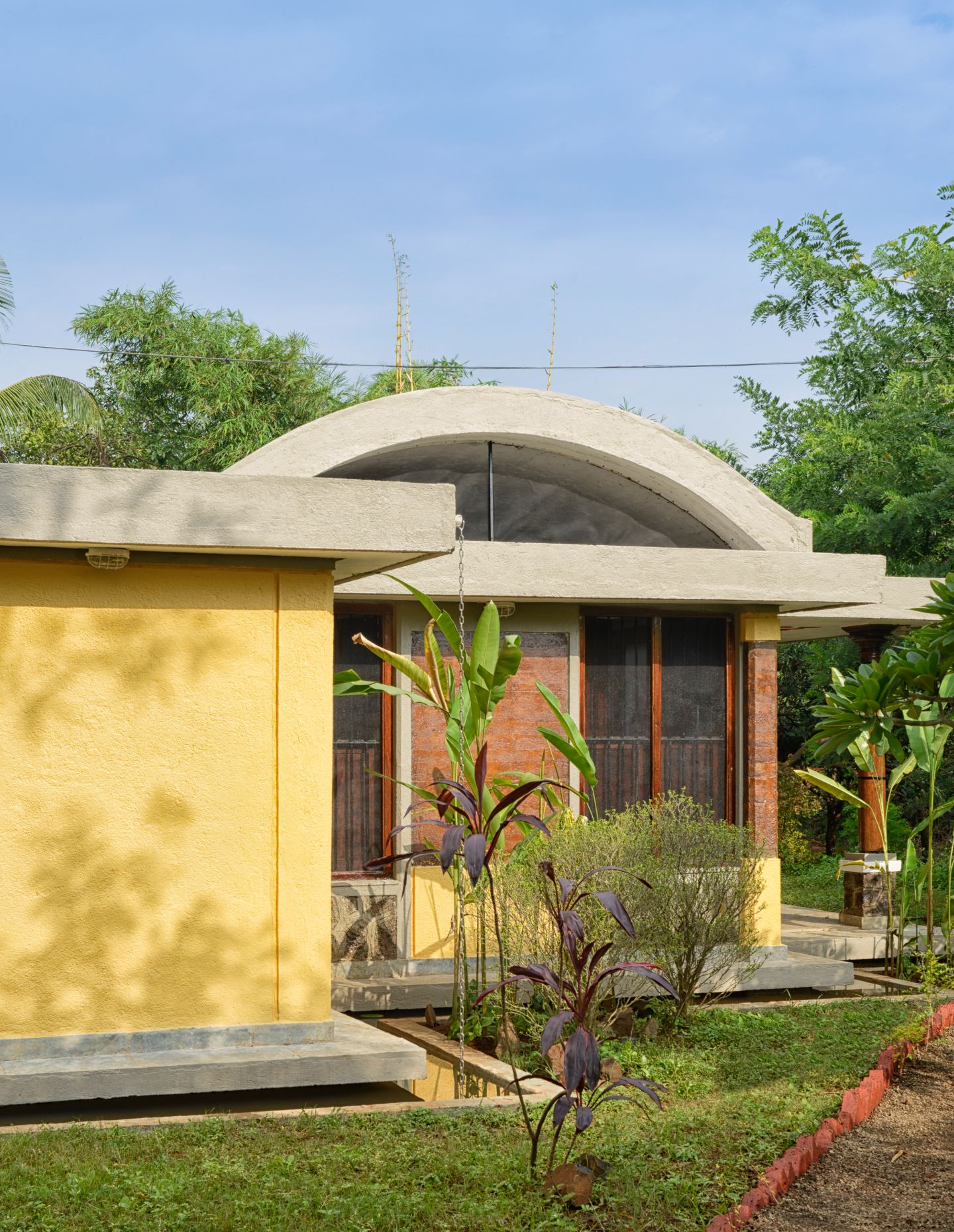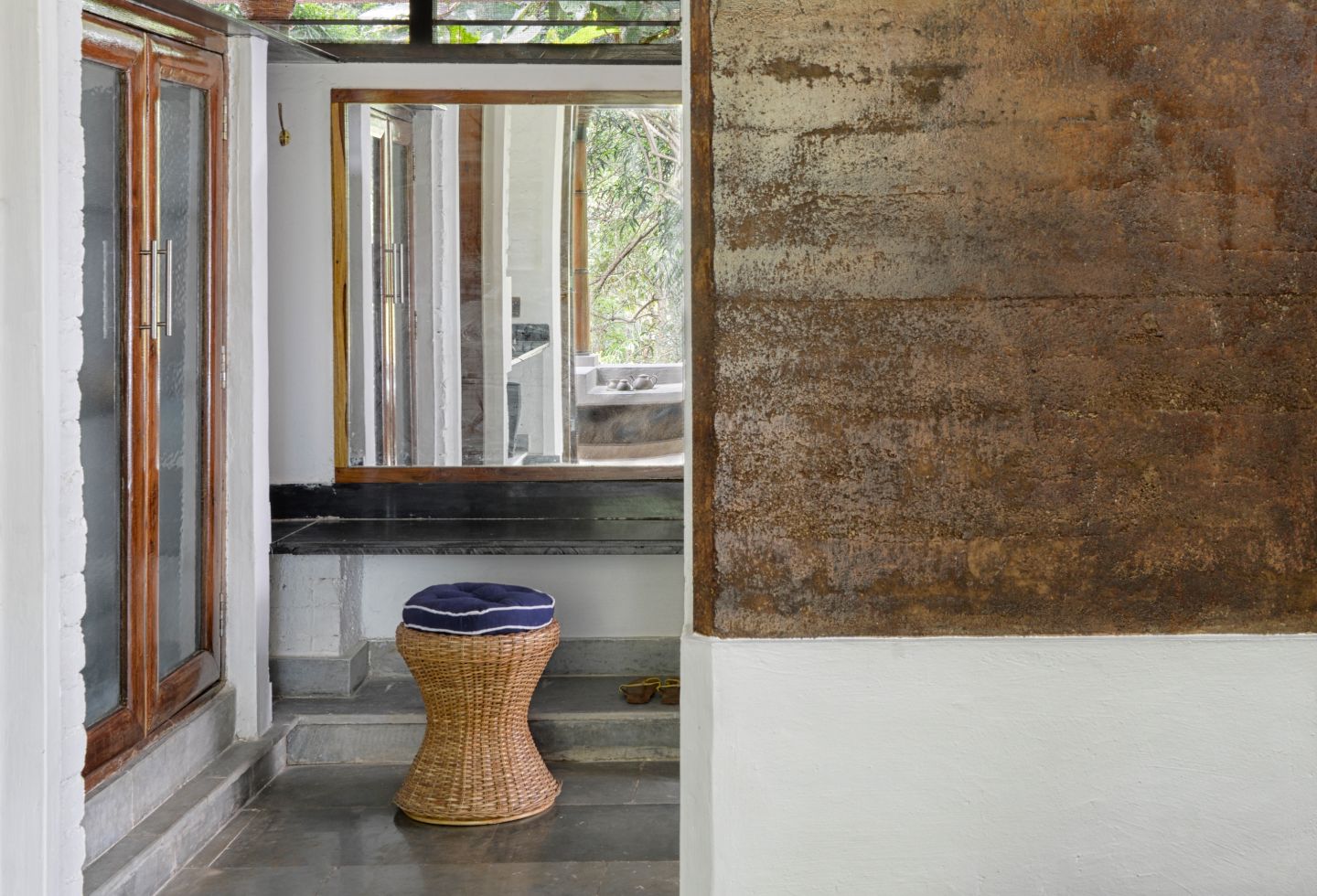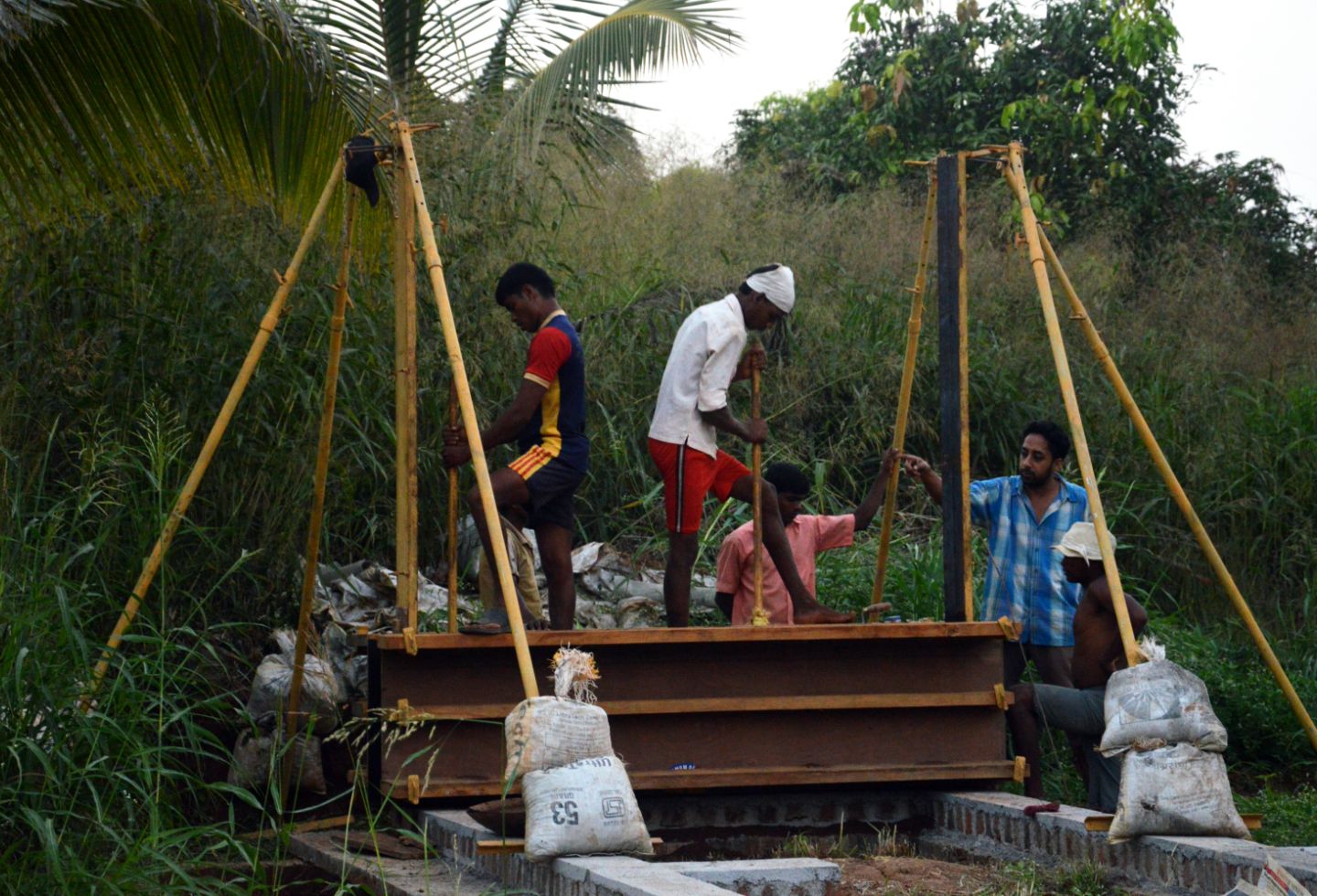The work of contemporary architects across India spans several site typologies – from remote farmland towns to the dense urban fabric of its tightly packed cities. Housing often unique and complex family groups, the modern-day homes of India are highly tailored in contrast to many western residences, and often embody a deep connection to land, resources and craftsmanship.
Based in Haryana, The Vrindavan Project are a duo of creatives, Ranjeeet and Shreenu Mukherjee, who deliver a range of residential projects. Each work is highly bound to its context and the families that occupy them through the embrace of place-specific innovations.
Delivering a modest two-bedroom weekend getaway for a small family from busy Mumbai, The Vrindavan Project’s design for Farm House embraces non-traditional construction materials in an innovative home that is both sustainable and bold in its design. In contrast, their City House project, sited in the winter capital of Jammu and Kashmir is a large eight-bedroom home housing multiple generations under a tapestry of the architects’ experimental design ethos.

“Both of these homes are results of conceptually prioritising process over product,” says co-founder Ranjeet Mukherjee. “As design consultants, we were weaving together vast and diverse skillsets of artisans, craftspeople, technicians and specialists from numerous disciplines,” he adds – and all while balancing the needs of the clients and site.
Talking with Ranjeet, it’s clear that navigating governance is a significant factor when shaping the contemporary Indian home. “Delivering a project [Farm House] in the idyllic countryside setting of Maharashtra’s lush green agricultural territory, which sat outside of the municipal extents of Mumbai city’s stringent urban planning guidelines and strictly enforced building codes,” afforded the team “a flexible and innovation-friendly context for alternative construction technology experimentation.”
Ranjeet continues: “We were working directly with local artisans who were simultaneously tending to their own fields as farmers.” The introduction of rammed earth walls, terracotta filler slabs and brick vault roofs involved teaching their otherwise traditional site workers every aspect of these processes through sample-making, prototype testing and live technology workshops on site. Excavation across building sites in this area also led to a bounty of soil being available for construction; for the masonry, The Vrindavan Project used rubble rock chiselled out from the Western Ghats nearby. The wood, meanwhile, was sourced from locally fallen trees.

In contrast, their City House – located within the dense suburban fabric of Jammu city – sat in a firing line of rigorous scrutiny from an array of municipality agencies, departments and allied authorities. This home boasted a break-the-mould ideology on traditional building practices ordinarily accepted by authorities. As such, it became about presenting alternative construction methodologies to senior officials at council in a way that would “strike a nostalgic understanding of how buildings across India are traditionally erected,” says Ranjeet. On-site, he also “realised that even sophisticated urban contractors were not familiar with filler slabs, jack-arch roofing and exposed masonry techniques.” Much like training their remote workers in the village at Farm House, The Vrindavan Project found themselves, again, teaching new construction methodologies – only this time, within a developed urban setting.
In hindsight, Ranjeet views the “more top-down regulated environment of the City House as not resulting in any material or logistical constraints whatsoever. The territory of Jammu and Kashmir demonstrated a very clear development-oriented governance paradigm. It cleared most obstacles faced by the average citizen when undertaking any action contributing to economic and infrastructural growth within this established territory,” he shares.
While the modern homes of India are shaped, in part, by governance (or lack of) around the sites that they are built on, it appears that contemporary architects are taking it into their own hands to arm the construction industry with alternative building strategies and construction innovations. What is most fascinating, however, is how the modern homes of India stand so visually different to other contemporary homes across the globe. Devoid of clean white walls, steel benchtops and large extents of glazing, the homes of modern Indian families seem to gracefully balance advancing design and construction means, all while holding strong ties to land, place and the materials that truly ground them in Indian soil.














